What are cryptocurrency nodes and how to make money on them
Introduction:
Cryptocurrency nodes (from Latin nodus - node) are special nodes in the network that process or start transactions. It can be any server or computer connected to the blockchain network. In other words, a node is a blockchain network node that can be deployed on your own computer or a rented server.
At the beginning of 2023, there are two consensus: Proof of Work and Proof of Stake. The Proof of Work consensus allows blocks to be computed using mining hardware. The larger and more powerful the equipment, the faster and more blocks can be calculated and earned accordingly. This is how the Bitcoin blockchain works.
To test the network on the Proof of Stake protocol, people are needed who can run a node on their server, get a demo coin and act as a test network validator. This will allow developers to test the functioning of the network.
And why do I need it?
It is perfectly correct to ask such questions. It is logical that many serious projects, in order to test their performance, roughly speaking, need to check the operation of the network. Well, for this, as in any blockchain, you need to send and receive transactions. And why do we have these processes? That's right, thanks to nodes and miners !
The project itself offers its users just the same, to take part in testing by installing nodes, in short, all users install hundreds to thousands of machines in order to process transactions in the project's test chain. + - such understanding will be enough.
As a result, retro-rewards with crazy profits are very often poured from such a movement.
I'll give you a few examples:
1. Aleo - distributed 9000 ALEO coins. The project, when announcing the testnet, immediately said in the forehead that it would be paid + rolled out all the formulas and information on how this would happen, including specific awards. For one miner node, which cost about 8,000 rubles / month, it was possible to mine 1 block, for which they gave 510 ALEO (the price of a coin at that time was $ 0.4)
2. Solana - gave away from $1500 - $150000, I have no words.
3. Avalanche - Noders who placed it from the first stage received 2,000 AVAX each (in fact, the system of points and a pool of rewards worked), now it's about $168,000, at the peak it was $260,000. The node cost a penny, in fact, several hundred rubles a month. But it's impossible not to clarify, it was still June 2020, then the nodes - it was generally who knows what, it could be installed by just a percentage of people.
4. Mina Protocol - this project was promoted very much, but after the nodes, as far as I remember. As a result, they gave away 66.000 MINA each, which is currently $165.000, and at the peak it is a fabulous $396.000. Okay, I'm drooling...
5. NYM is one of the last representatives of retro happiness. For the installation of the node, they gave out priorities for the sale that took place on Coinlist (a very valuable thing, it seems like ~ 50% of accounts with priority flies into the sale), as well as tokens of the project itself ( about 1500 NYM each, which cost $0.5 from the first option + Throw x's). In short, this happiness, according to my subjective calculations, each lucky person got $8,000 for just one node, which cost ~ 400 rubles / month!
So, sort of with the “why” part, we +- figured it out, but now that you understand why, we need to choose a project, right?
Search and project selection
As for the search, of course you can find projects yourself on Twitter or somewhere else (as a matter of fact, it's the right thing to do), but I'll tell you about the simplest methods, and besides, I haven't heard of any really successful testnet yet ( in the $ plan for nodes) that would not exist on at least one of the following resources:
- Dropsearn is a product of Sergey (ICODrops), which publishes all the main activities in the crypt, including nodes. It's very simple, go to the site, Ctrl+F and search for the keywords "testnet" and "node". I don't understand their distribution into categories a little, so when you see a project with one of the mentioned categories, additionally check it, it may not be a node at all (in the case of the word "testnet").
- Nodes.guru is a very top resource focused specifically on nodes. There is both info on the project itself and on installation, but more on that later.
- Telegram channels are a slightly specific method for searching for information, but there are nuggets here. Here are a few channels in tg that go straight to me: Let's Node! , Nodes Guru News , how_to_node.
Let's say that we have found several projects. Now we need to choose the one that seems to be the most beneficial. Here you can use a high-quality old article on project analysis, but you should pay attention to which testnet is currently running, incentivized or not. Here, I can't say in specifics which one is preferable, because. different projects, different awards and so on, try to reason for yourself!
installation process
Well, here we are at the base. As I said, you should not immediately mark the project as "difficult", in fact you just need to follow the instructions and EVERYTHING. To begin with, you should pay attention to what kind of node it is. There are a couple of options:
- Node-miner - yes, nodes can also be miners, one of the brightest examples is Aleo, because it works on ProofOfWork. In the case when you need to install a miner, you need to take DS (Dedicated Server, that is, a dedicated server, that is, a dedicated server) - this is a separate computer for you to assemble in the data center and it will work only for you and nothing else.
- Node-node - these are nodes that can be installed on virtual machines (virtual servers), otherwise - VPS / VDS. Brought to you by Hackfreaks official. These are no longer separate computers, here, roughly speaking, there is one powerful server with a trillion processor cores (s) and thousands of GB of RAM, from which you are split off a piece in the form of, say, 2 cores and 4 GB of RAM.
Sites for renting servers:
Aeza (VPS) - a fresh service, very suitable, top for sure in the CIS space. There is an hourly payment when choosing, several locations by country, very low prices for VPS and a lot of bonuses.
FirstVDS (VPS) - old, but kind and cheap. By ref/promik 6481085074 - 25% discount on the first order.
FirstDEDIC - the top brother of the previous site. Fast and kind support, cheap rdp with interesting processors. Collect servers sooo quickly compared to competitors. They say that a high load on the percentage is prohibited, but in fact everything is fine!
TimeWEB (VPS) - old hosting, sometimes I take virtual machines here, the prices are pleasant. As far as I understand, they will give 300 rubles to the bonus balance after paying for the VPS and 2000 rubles after paying for the rdp also to the bonus balance.
SmartApe (VPS) - cheap rdp with various configurations, but VPS here, of course, are expensive.
VPSHoster (VPS) - service for renting virtual machines, good reviews.
Contabo (VPS) - hosting with very cheap rdp and virtual machines, but they take payment for installation + I heard that there are sometimes problems with "checks" for paying for the server, they say they still come after the removal of the server, although, on the other hand, people say that everything is normal.
MevSpace (*VPS*, Dedicated) - young Polish hosting, but already well established. A very good price for the rdp, VPS is right here over-over-over price!
Selectel (*VPS*) - decent hosting, but the support here is a bit slow and uncertain. Grandfathers with the ability to install a video card, and VPS are expensive.
Hetzner (VPS, Dedicated) - German hosting. Has proven itself very well over the years of work. Cheap virtual machines and rdp. If you take a rdp - there is a fee for installation. Sometimes they ban for miners, according to experience, a server can stand idle for a couple of months, after which it will be demolished with a certain probability. You will need to pass KYC!
DigitalOcean (VPS) - Give $100 bonus on ref for 60 days. You can buy virtual machines from them with this money, but the bonus is given only after the bank is linked. cards (nothing will be written off, only a couple of dollars will be removed and returned when tied). Virtual machines flatly refuses to accept Tink can be abused on virtual cards, for example.
VDSina (VPS) is a service with daily billing, but in general, because of this, it is overpriced, but for a couple of days, if necessary, you can take it. Link for 10% off
Macloud (VPS) - the brother of the previous one, I also characterize it. Link for 10% discount
More interesting articles on our Channel: Hackfreaks official.
WebTropia is generally a good service, but a lot of people complain about bans after installing a miner node. I left it purely for information, I don't take it myself.
How to connect to the server then??
Now that we figured out which server to take, we need to somehow connect to these servers. To do this, we use the program MobaXTerm. There is a paid version for $69 forever and a free version with restrictions (it says on the site), but in general, there are no critical restrictions in the free version. I recommend downloading "Installer edition".
After downloading, choose a dark or light theme (well, you understand which one to choose) in the middle of the application window.
Now we go from there, here, then we will click on this and we will go here ....
We will connect to the server via SSH. In some services where we rent a server, they allow you to log in simply by IP:user:password, while in others you need to use an SSH key. Let's see how to do it. More interesting articles on our Channel: BigTech Ng official.
Password Authorization:
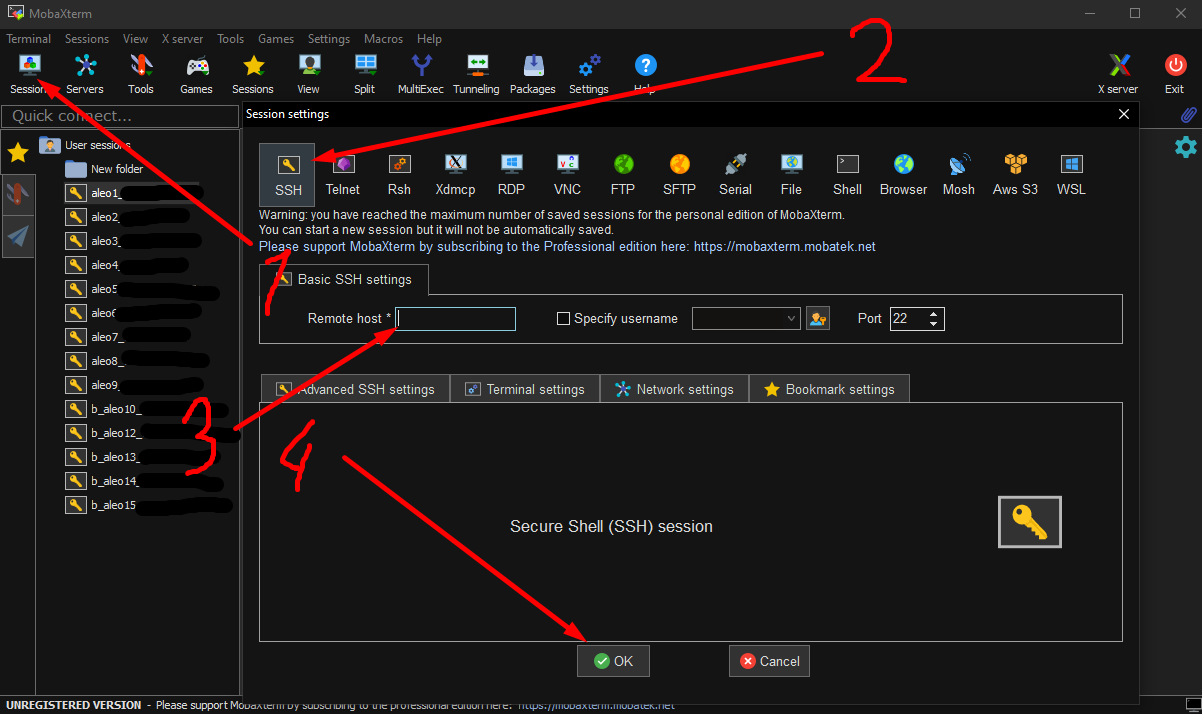
Under the number 3, enter the public IP of the server and click "OK". Now you need to enter a username, often it is root, but if you are given the opportunity to come up with your own, then make it different from "root", "admin" and so on (sometimes vice versa, you need to create a server with just such usernames, try it)!

We insert the password with a combination of Shift + Insert (Ins), you can forget about Ctrl + C, Ctrl + V, etc. when working with Moba!
When you insert the password, it will not be visible, it's normal, in fact it was inserted, just press Enter!
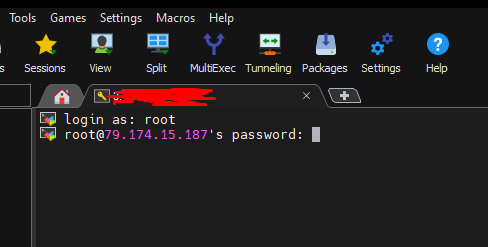
Upon successful login to the server, you will see something like this:
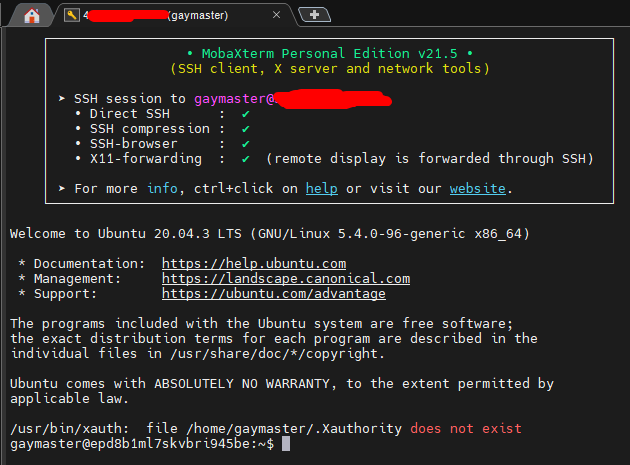
SSH key authorization:
First we need to generate SSH keys in Mob
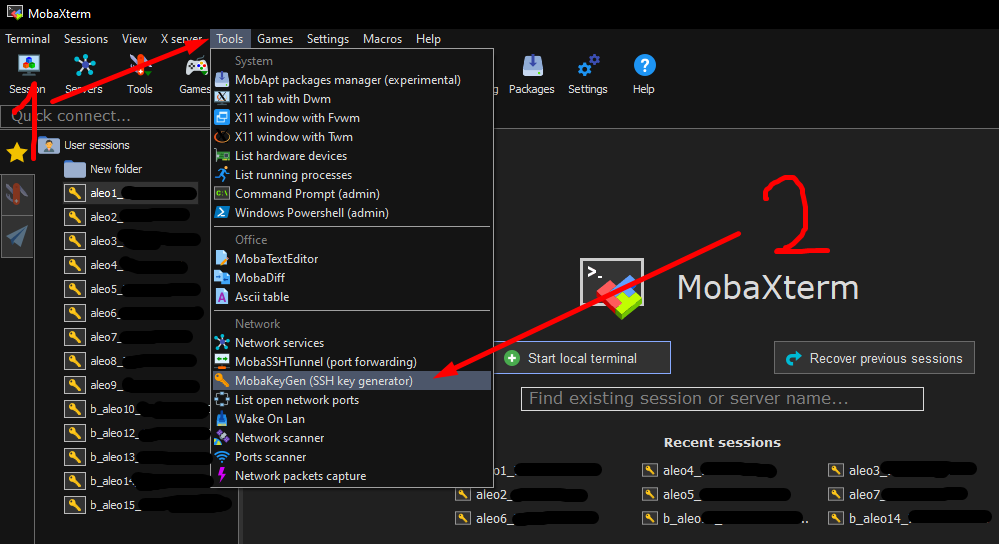
Now we generate an SSH key (click on Generate and move the mouse within the window to randomize the generation):
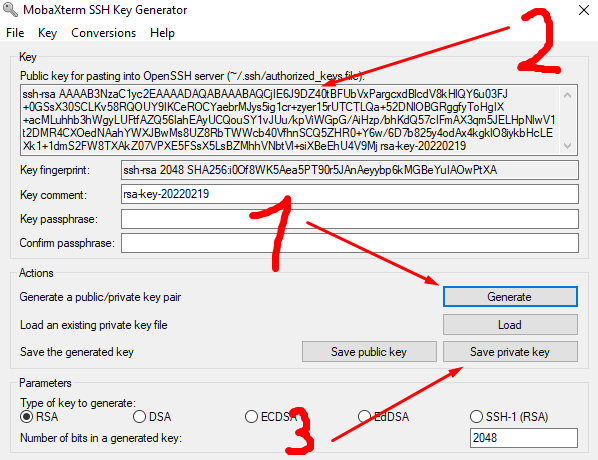
Copy the public key (2) and enter it into the required window on the site where we take the server:

ALWAYS save the private key (3) as a file somewhere on your computer!
Now that you have entered the public key on the site, you can click on "Create Server" or something like that. After the server is created, copy its public IP.
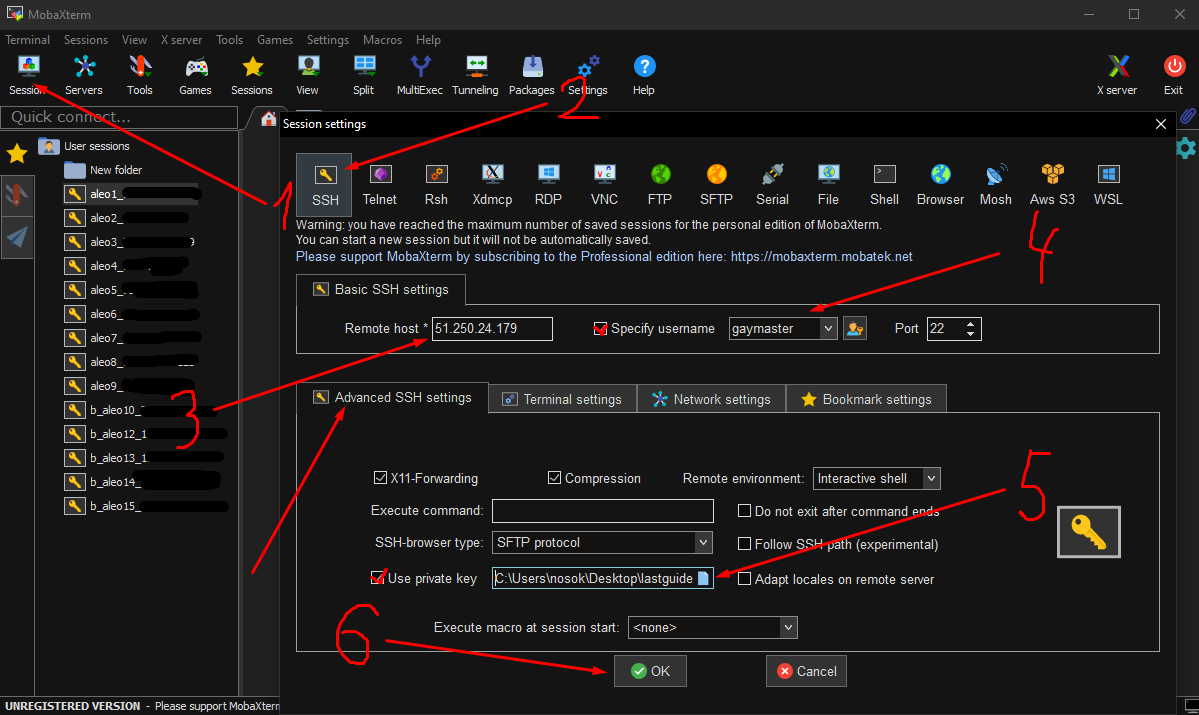
Under the number 4, you need to enter a username, here is the same thing that I said in the paragraph on authorization with a password:
"Now you need to enter a username, often it is root, but if you are given the opportunity to come up with your own, then make it different from "root", "admin" and so on (sometimes vice versa, you need to create a server with exactly these usernames, try it)"
In step 5, select the file with the SSH private key that you previously saved. We press "OK".
Upon successful login, you will see something like this:
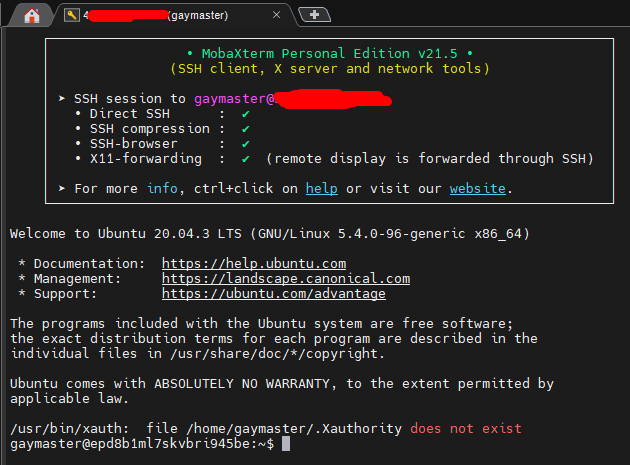
Well, I have a server, and then what?
When you first hit the server, immediately update its software with the command:
So how to install this bourgeois node of yours?
Finally we got to this one. In general, as I said, there is nothing complicated, just follow the installation instructions. You can take either the official instruction (scour the project site yourself, or there will be a direct link to the instruction on the testnet announcement page), or you can use the instruction from Nodes . Guresov , well, or look at Let's Node and HowToNode.
Show step by step how and what to do - I will not, because. it's all in the instructions in the above sources.
What is better to use to raise a test node, a rented server or a home PC?
Home PC refers to any hardware in your home, it can be either a server or a regular PC or laptop. What do you need to provide a home server or PC on which the node will stand:
- Uninterrupted internet and power connection. The PC needs to be running 27/7 and any power outage or internet outage can wipe out days, weeks or even months of your running a node. In this case, your reward can either be cut or completely deprived of it.
- Stable and good internet connection.
- Minimum technical skills to solve problems or update node scripts.
- Permanent presence near the PC or near the location where your server is located.
- Payment for internet and electricity.
Maintaining a node can take weeks or months, so it's best to use servers. Monthly payment for such servers will be your only cost. On average, a testnet lasts 3-4 months. For the cost of one normal PC, you can pay for servers on the Internet for several years and not worry about its performance and configuration.
output:
As you may have noticed, in general, setting up a node is really not that difficult, it's just a set of instructions. Regarding the profit, I think that you have already been motivated by several examples from the first paragraph of the article. But if you still have questions about how profitable it is, then I will give another example:
This is a HOPR project that distributed an allocation to the sale + as far as I remember, 6600 HOPR (coins), as a result, it came out from one node for $5000+ at least, I don't remember exactly.
People who don't understand why they need to dig into your nodes at all - I advise you to think about this "craft", perhaps in the future you will thank yourself for having decided on this.
That's all for me! Don't forget to share my content with your friends. I wish you success!




